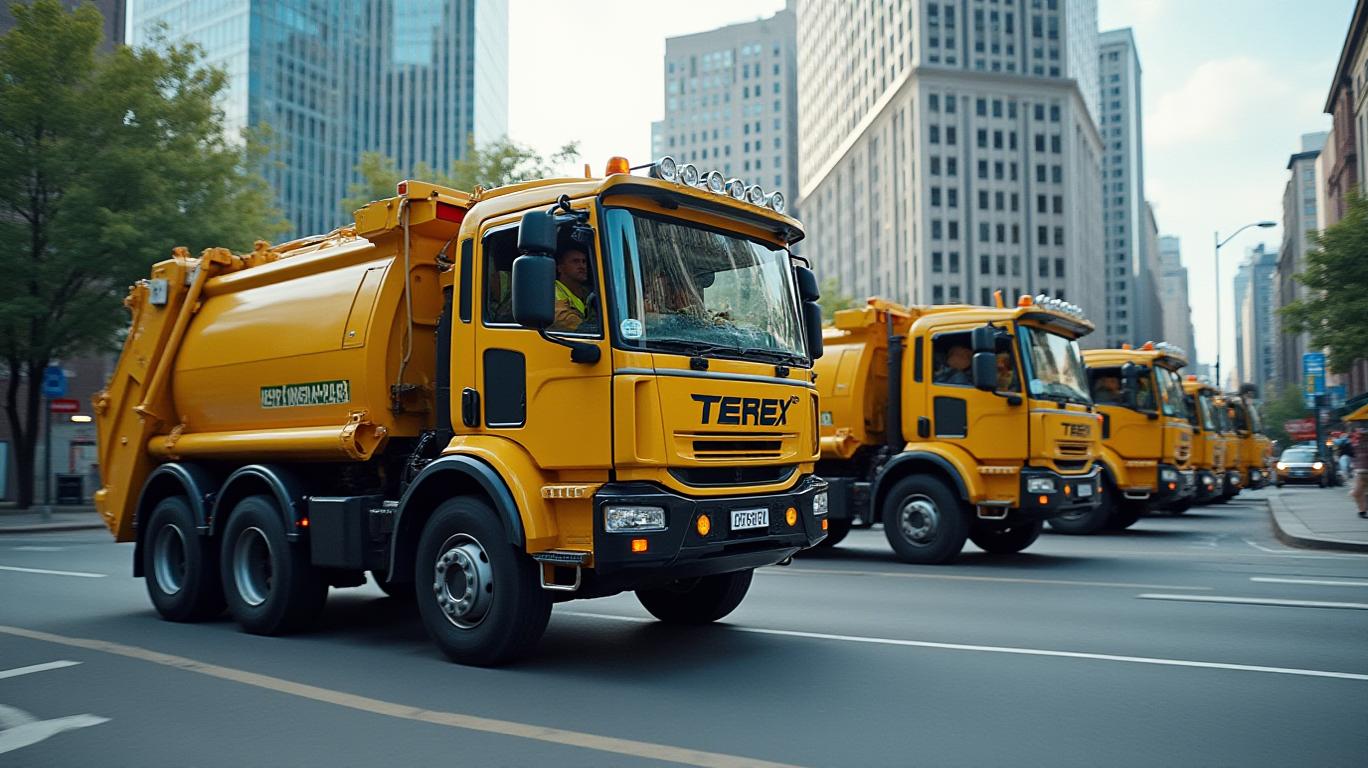Terex Corporation (TEX): Navigating Tariff Storms with a Resilient Strategy for Long-Term Growth
The global machinery sector is no stranger to turbulence, but few companies are as strategically positioned to weather storms—and capitalize on them—as Terex Corporation (TEX). As trade tensions and tariffs roil supply chains, Terex's dual focus on localization, cost discipline, and high-margin acquisitions is turning headwinds into a tailwind for long-term earnings stability. Let's dissect why now is the time to invest.
The Tariff Challenge: A Necessary Storm
Terex's Q1 2025 results revealed a 4.9% year-over-year drop in net sales to $1.2 billion, with tariffs and trade policies cited as key culprits. Margins in cyclical segments like Aerial Work Platforms (AWP) and Materials Processing (MP) contracted due to lower volumes and unfavorable product mixes. Yet, this isn't a story of decline—it's a narrative of resilience in the making.

Mitigating Tariffs: The U.S. Manufacturing Play
Terex's first line of defense is domestic production. By 2025, 75% of U.S. equipment sales will originate from American factories, sharply reducing reliance on tariff-prone imports. This localization strategy isn't just about risk mitigation—it's a growth lever. U.S. demand for construction and refuse equipment remains robust, and domestic production ensures Terex can capture this without foreign tax drag.
Meanwhile, the company's global footprint provides flexibility. CFO Jennifer Kong-Picarello highlighted preemptive actions in 2024–2025 to reconfigure supply chains, ensuring costs stay manageable even as trade policies shift. This dual approach—U.S. localization paired with global agility—is a textbook hedge against volatility.
The ESG Acquisition: The Anchor of Stability
The $2.0 billion acquisition of the Environmental Solutions Group (ESG) in late 2024 is Terex's masterstroke. ESG's refuse collection vehicles, waste compactors, and digital solutions now form the Environmental Solutions (ES) segment, which contributed $399 million in Q1 2025 revenue (one-third of total sales). With margins soaring to 19.4% (up 420 basis points year-over-year), this segment is the engine of Terex's resilience.
Why does this matter? The ES market is low-cyclical, insulated from construction downturns that plague MP and AWP. ESG's 21.9% adjusted operating margins in Q4 2024 prove its profitability punch. Pair this with Terex's plans to grow ES revenue by mid-single digits in 2025, and you have a buffer against near-term tariff headwinds.
Restructuring: Cutting Costs to Fuel Long-Term Growth
While tariffs bite, Terex isn't passively enduring pain. The company slashed costs in MP and AWP, two segments facing industry-wide channel adjustments. Production cuts and efficiency gains have stabilized margins: MP's adjusted operating margin held at 10.0% in Q1, while AWP's improved to 3.0% despite sales plunging 27.8%.
These moves aren't just about survival—they're about reinventing the business. By stepping back from overproducing in cyclical markets, Terex is redirecting capital toward higher-margin ES and new product development. The goal? To emerge leaner, nimbler, and less exposed to global trade shocks.
The Financial Foundation: Strong Balance Sheet, Steady Outlook
Terex's $1.1 billion liquidity (cash + credit facilities) is a war chest for both defense and offense. The company has maintained its 2025 full-year outlook: $4.70–$5.10 adjusted EPS, even as it invests in ES integration and U.S. manufacturing.
Crucially, management assumes tariff relief will materialize, but the 2.0x leverage target by 2025 underscores confidence in its self-reliance. With free cash flow projected at $300–$350 million, Terex can fund dividends, buybacks, and innovation without overleveraging.
The Investment Case: Buy the Dip, Harvest the Upside
The market has yet to fully price in Terex's strategic pivot. While tariffs and MP/AWP declines pressure near-term results, the ESG-fueled margin resilience and U.S. localization create a compound growth runway.
Buy TEX now for three reasons:
1. ESG's low cyclicality insulates earnings from macro downturns.
2. U.S. manufacturing dominance shields margins from tariffs.
3. Cost discipline ensures survival—and profitability—in tough quarters.
The stock trades at 10.5x 2025 EPS estimates, a discount to its cyclical peers. With shares down 15% YTD (vs. S&P 500 flat), the dip is a buying opportunity.
Final Verdict: Terex is a Value Play with a Growth Heartbeat
Terex isn't just surviving tariffs—it's redefining its identity as a leader in waste and recycling solutions. The ESG acquisition, paired with disciplined restructuring, has transformed it from a cyclical laggard into a resilient growth story.
Investors who act now can capture both the short-term valuation rebound and the long-term earnings stability Terex is building. This is a stock to hold through the storm—and profit when the sun shines again.
Actionable Takeaway: Add TEX to your portfolio at current levels. Set a target of $45–$50 (20% upside from $37.50) by year-end, driven by tariff relief and ES growth.
Data as of May 26, 2025. Past performance ≠ future results. Consult your financial advisor before investing.

Comments
No comments yet